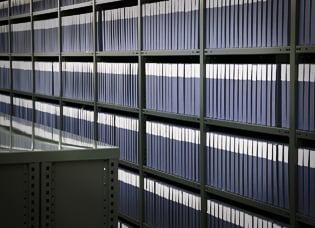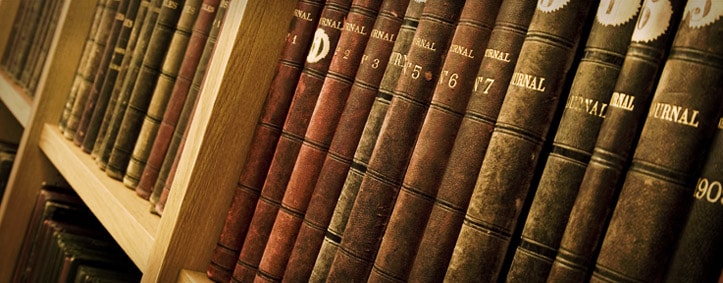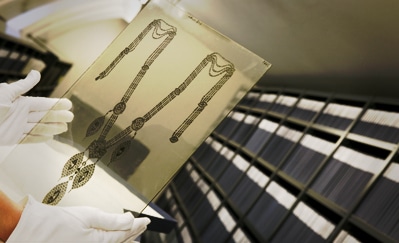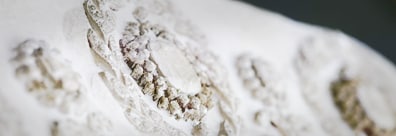ARCHIVES

The Cartier archives are a collection of ledgers, photographs, plaster casts and drawings stored and maintained primarily in Paris but also in London and New York. These documents provide an accurate record of day-to-day events at the Maison since it was founded. Every piece is documented and referenced from design to sale and throughout the production process. These files are extraordinary reference materials, particularly useful in the restoration of old pieces, and are still an inspiration for Cartier jewellers today.

LEDGERS
Because the Maison has operated at 13 rue de la Paix since 1898, the perfectly preserved archives provide a near-complete record of sales from the early 20th century to this day. In addition to sales ledgers, other records dating from the 19th century partially document business at the premises in the Boulevard des Italiens, offering a glimpse into the Second Empire, a key period in the Maison's history.
PHOTOGRAPHS
An extraordinarily rich collection of photographs accompanies the ledgers: since 1906, as industry custom dictated, a life-size photograph has been taken of each piece produced in the workshops. The Paris collection includes nearly 40,000 negatives, including 30,000 gelatin bromide dry plates. This photographic collection is updated on a daily basis and provides an accurate visual record of production history.


PLASTER CASTS
Paris is also home to one of the most beautiful demonstrations of the Cartier workshops' creativity: a unique collection of plaster casts from the period 1900-1920. Plaster casts were a method of recording the curve of a tiara, the dimensions of a necklace, and the sometimes impressive height of the gems – information that is difficult to glean from a photograph. These plaster casts provide insights into a wide range of pieces that have now disappeared.

DRAWINGS
The creative process is extensively documented in a large collection of sketches, preliminary drawings and execution diagrams. Ideas were initially conveyed in rough sketches, usually drawn with a fountain pen and assembled in workbooks. External sources of inspiration, taken from architectural designs or decorative albums, would be drawn together on one or more sheets.
Traditionally, the jeweller's design would then be drawn on tracing paper. Gouache and watercolour techniques were used. The composition of the piece was highlighted with a graphite pencil drawing. This method allowed the jeweller to refine and correct the design, and to find the right balance between the luminosity and density of the piece.
The finished production drawing would be sent to the workshop. The drawing depicted a life-size front view (use of perspective was rare in drawings). The colour, texture and size of the gems were described in meticulous detail, invoking strict design standards.